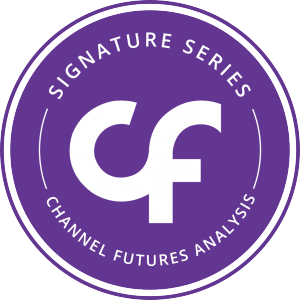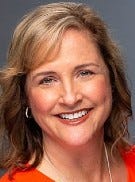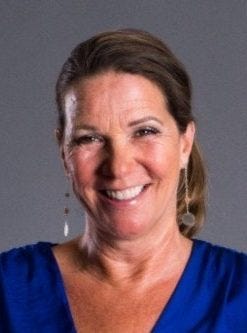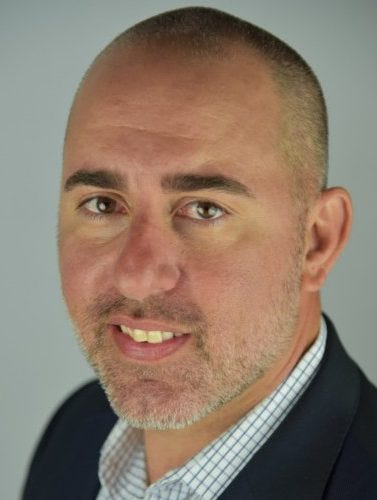MDF and the Channel: What Happened to the Customer?
“I'm trying to see what this has anything to do with growing business... and I'm not," Hilary Gadda said.

If you ask Dave Dyson, channel MDF reached its breaking point years ago.
 Many agent partners and other members of the channel are calling for reform in how vendors and their technology solutions brokerage (TSB) partners utilize market development funds (MDF). Market development funds (MDF) at their essence connect suppliers and partners to one another for the purpose of reaching the end customer. However, partners have expressed worry about inefficient – and even recklessly wasteful – spending, poor return on investment and a lack of focus on the end customer.
Many agent partners and other members of the channel are calling for reform in how vendors and their technology solutions brokerage (TSB) partners utilize market development funds (MDF). Market development funds (MDF) at their essence connect suppliers and partners to one another for the purpose of reaching the end customer. However, partners have expressed worry about inefficient – and even recklessly wasteful – spending, poor return on investment and a lack of focus on the end customer.
This article is the first of two on how MDF functions in the technology sales channel, focusing on the commission-based agent referral partner model. Part one focuses on how vendors utilize MDF, while the second part examines how the modern TSB business model is shaping the way vendors and partners relate to one another.
MDF Defined
A manufacturer or service provider disburses MDF money to its channel partners with the expectation that the partners will sell its products and services and drive brand awareness for the vendor.
The type of partner receiving the MDF varies based on the vendor. The vendor may offer the funds directly to a customer-facing partner, whether it be an agent, value-added reseller or managed IT services provider. However, in the common agent channel model, money transacts from the supplier to the distribution partner, which connects the supplier to selling partners. For example, a vendor pays the TSB or disti to host an event, program or contest that draws customer-facing partners (in this case, agents and VARs) into contact with the vendor. The distribution partner provides the supplier with leads of partners that participate in the program. The results that follow for the most part amount to how the vendor utilizes those leads.

Telarus’ Amy Bailey
“We plan and execute the event. Then within two days, we send them a list of everybody they met at the event,” said Amy Bailey, senior vice president of marketing for Telarus. “What they do with that is highly dependent on how much [return on investment] they’re going to get.”
MDF does function in alternative models to those mentioned above, but this article specifically examines the traditional model in two-tier distribution, which goes through the TSB.
The ‘Trinket Crowd’
Dyson, who runs Chicago-based consultancy Eclipse Telecom, recalls a pre-pandemic time when five separate tech solutions brokerages hosted an event in Chicago in a span of less than two weeks. Two hosted an event within a mile of each other on the same day.
If you went to all of the events, you would have seen many repeat faces. For example, some vendors sponsored multiple events.
“I said to a channel chief at the time, ‘You’ve got to be sick of paying for all this. This is crazy,'” Dyson said.

Eclipse’s Dave Dyson
On the other hand, many subagents hopped from party to party. Dyson fondly refers to this group as the “trinket collecting crowd.” This group goes event-hopping, and they prioritize the free meal and merchandise more than any business strategy they’ll acquire from the gathering.
While a vendor may see these events as an opportunity to gain the mindshare of these attendees, Dyson warns that the trinket crowd doesn’t see it that way. Dyson said hosting these events isn’t actually creating partner loyalty.
“The agents are going from event to event to event, but they’re still putting their business where they always put it. They’re not necessarily making big vendor changes or even big distributor changes,” he said.
Moreover, partner loyalty does not necessarily translate to market development, according to Nancy Ridge.

Ridge Innovative’s Nancy Ridge
“Yeah, they became experts, because they saw the presentation three or four times while they were hanging out with their friends and eating lunch. But did they sell anything?” said Ridge, founder and president of Ridge Innovative and former executive vice president of Technology Source.
Nevertheless, this MDF motion has gained a strong foothold in the channel. Hilary Gadda, TPx Communications‘ director of national channel sales and development, reviews sponsorship proposals from partners, with the largest coming from TSBs. She said most of these projects won’t …
… tangibly help TPx and its partners expand their market.

TPx Communications’ Hilary Gadda
“I’m trying to see what this has anything to do with growing business, with us coming together and uplifting the channel. And I’m not,” Gadda told Channel Futures. “I’m seeing more cornhole tournaments with a purse of $10,000. I am seeing parties. I’m seeing golf.”
Where Are the Customers?
Partners note that MDF in many cases doesn’t make its way down to the customer. Instead, vendors are banking on expanding their partner base and, by extension, expanding their sales force.
“It’s not very client-focused; it’s more agent-recruitment focused,” said Micah Bevitz, CEO of iTelecom.

iTelecom’s Micah Bevitz
Moreover, Dyson said vendors need to figure out if they are looking for quantity or quality. For example, a contact center provider sponsoring an event might land the names of a dozen partners. However, Dyson said only a small percentage of the channel can sell contact center.
“Is it recruitment of volume, or is it getting to the people who actually can and will sell your stuff? That’s the question the vendors have to ask,” Dyson said.

Rad-Info’s Peter Radizeski
Peter Radizeski, president and founder of Rad-Info, said suppliers are handing out MDF with a mistaken premise about expanding their addressable market.
“The mistake almost every vendor makes is that they think the partner creates demand,” Radizeski told Channel Futures. “And that’s not what happens. All we do as partners is supply demand.”
Nancy Ridge said she tried to incorporate customer-focused MDF programs when she worked at a distributor. For example, her company hosted peer groups that agents attended with their customers. The partners would invite the client to a monthly meeting where multiple vendors would talk about a technological subject. Ridge said the vendors, partners and customers all saw the value of the events.
Mot importantly, it “always got sales.”
“I gave the MDF directly to the customer through the partner. And then the partner got to be seen as the venue for that customer,” Ridge said. “So why not let the customer eat the lunch?”
However, Ridge said the model didn’t seem to take off in the channel, and for various reasons. Ridge said agents might worry about their customer talking to another customer. Moreover, the vendor might not want their prospective customer to talk to another vendor at the event. Furthermore, many agents worry about their peers seeing their customers in the post-event LinkedIn photos.
“Nobody wants to post those events on social media,” Ridge said. “If I say on social media that this is my customer, then someone else is gonna go after them.”
Enablement
Partners still see potential in MDF that runs through the TSB and focuses on agent recruitment, but that comes with a caveat. It’s one thing to make the partner aware of your technology portfolio; it is another to enable them to sell it.
Keep up with the biggest distributor and technology solutions brokerage news in our latest roundup. |
Bailey said education needs to run parallel to all the relationship-building events. Not a day goes by without a picture surfacing of a vendor taking a TSB and its agents out to a sporting event, but the pictures of CCaaS training sessions don’t seem as plentiful.
“If we’re only buying beer and going to tailgates, that MDF is dead,” Bailey said.
But Gadda said even vendors that do focus on education need to refine the presentations they make at events to truly catch the enablement side.
“I don’t see any training on selling,” Gadda said. “I see product knowledge training.”
Direct Enablement
Radizeski said vendors can get return on investment by paying for their partners’ training. For example, paying for an agent’s CompTIA security training can help them transform into an effective seller of your product.
“If you’ve paid for your partners’ training, they’re going to be able to sell better, and they’re going to use you because you paid for the training,” Radizeski said.
Dyson he would like to see more vendors giving their MDF money directly to the subagent, rather than to the TSB.
“Why are you giving someone $100,000 to be a diamond sponsor when you could split that up among your top partners like me? Give me $5,000, and I could put 10 CIOs around the table at a steak house for you to bring an executive in,” Dyson said. “And I don’t think the distributor partners can make those promises.”

Mejeticks’ Robert Devita
Rob DeVita, founder and CEO of advisory firm Mejeticks, said MDF investment in subagents has increased.
“Some vendors still require it to go through the [TSB] but more and more are allowing us to directly access them — mostly used for lead generation and customer-facing events,” DeVita told Channel Futures.
Other partners aren’t seeing that change, however. Eclipse’s top handful of vendors will readily offer funds, but Dyson said he for years has been advocating for …
… a more widespread investment in customer-facing partners. He said the savviest vendors have realized ROI from investing directly in agents.
“I’m not saying the investment in distributors goes away. But I think it’s going to get split up a little more evenly. And I think there’s an appetite from the vendors even more than from us,” Dyson said.
A widespread version of agent investment does exist in the form of a president’s club. The president’s club rewards directly incentivize the partners to sell more from the supplier.
“If they’re having a contest, that’s not a bad use of MDF. And a president’s club is nothing more than a really big contest,” Radizeski said.
Strategic Alignment
Some partners encourage vendors to make MDF about more than just money. Dyson said partners in many cases need resources from the vendor as much as they need money. For example, a vendor once paid for him to host several CIOs to talk about security over dinner. But when Dyson asked if the vendor could offer the CIOs a complimentary security assessment, the vendor couldn’t comply.
“To me, if you have an event with eight decision makers, and you say, ‘Hey, we’re willing to come in and do a security assessment with you — it’s normally $5,000; we’re giving it away for free by virtue of your attendance at this event if you use it within the next 60 days.’ You’ve now fostered that next step in the conversation,” he said.
If the vendors want to sponsor customer-facing events with subagents, they can’t treat the subagent the same way they treat the TSB. The subagent pales in terms of resources. If recent agent rollups indicate anything, small agencies want to focus their energies on selling.
“It’s stressful for us when they come to us, because then I have to plan events and webinars and stuff. We don’t have the framework for those things the way a Telarus or an Avant does,” Dyson said. ��“These vendors want to invest in us to get to our customers, but I don’t have a marketing person sitting around to plan events.”
Dyson said vendors tend to not offer resources to the partners while happily offering money. But partners need more.
“I think it has to be deeper. I think it has to be a sort of thing where it has follow-up, a plan and cadence, and that requires work on both sides,” he said.
Jay McBain, who leads Forrester‘s research and advisory for global channels, alliances, and partnerships, said only 17% of the industry has adopted through-channel marketing platforms.

Forrester’s Jay McBain
“ Almost two-thirds of smaller partners are in the ‘do it for me’ or ‘do it on behalf of me’ category, and those vendors who have invested in concierge/creative/content services are having the most MDF ROI success,” McBain said.
The Future
Partners agree that the pandemic gave the channel pause to think about this topic. Ridge said COVID-19 disrupted a traditional MDF strategy that centers around in-person events.
Ridge said she sees a slightly different approach among the vendors as hybrid work envelopes the channel.
“I know that companies are coming back to the table approaching MDF a little differently,” Ridge said. “The technology distributors have had to change how they work with partners. They’ve had to, because all that got thrown out the window. No more lunch-and-learns. I think they’re trying.”
Other partners wonder if the same song and dance will return.
“Hopefully after this pandemic a more creative way to effectively spend MDF dollars will provide the partners, customers and vendors with a benefit,” Radizeski said.
The conversation around MDF reform contains many other topics, such as automation, visibility, measurement and strategic objectives. Stay tuned for the part two on this topic; we’ll home in on the technology solutions brokerage (TSB) model and its connection to MDF.
Want to contact the author directly about this story? Have ideas for a follow-up article? Email James Anderson or connect with him on LinkedIn. |
About the Author(s)
You May Also Like


